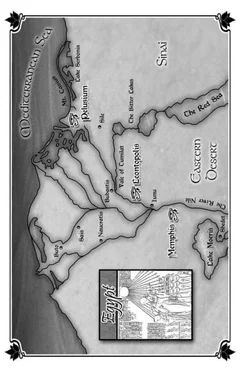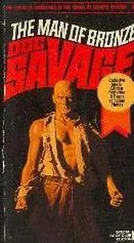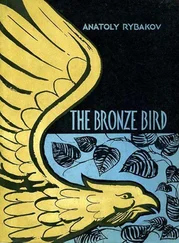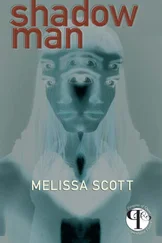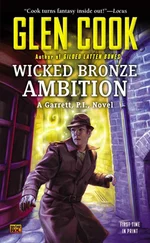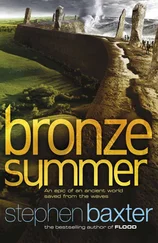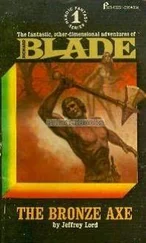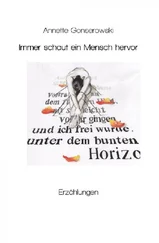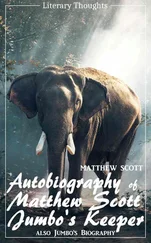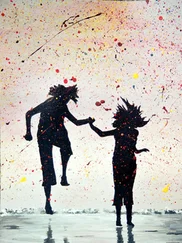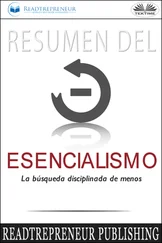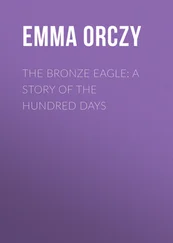Scott Oden - Men of Bronze
Здесь есть возможность читать онлайн «Scott Oden - Men of Bronze» весь текст электронной книги совершенно бесплатно (целиком полную версию без сокращений). В некоторых случаях можно слушать аудио, скачать через торрент в формате fb2 и присутствует краткое содержание. Жанр: Исторические приключения, на английском языке. Описание произведения, (предисловие) а так же отзывы посетителей доступны на портале библиотеки ЛибКат.
- Название:Men of Bronze
- Автор:
- Жанр:
- Год:неизвестен
- ISBN:нет данных
- Рейтинг книги:3 / 5. Голосов: 1
-
Избранное:Добавить в избранное
- Отзывы:
-
Ваша оценка:
- 60
- 1
- 2
- 3
- 4
- 5
Men of Bronze: краткое содержание, описание и аннотация
Предлагаем к чтению аннотацию, описание, краткое содержание или предисловие (зависит от того, что написал сам автор книги «Men of Bronze»). Если вы не нашли необходимую информацию о книге — напишите в комментариях, мы постараемся отыскать её.
Men of Bronze — читать онлайн бесплатно полную книгу (весь текст) целиком
Ниже представлен текст книги, разбитый по страницам. Система сохранения места последней прочитанной страницы, позволяет с удобством читать онлайн бесплатно книгу «Men of Bronze», без необходимости каждый раз заново искать на чём Вы остановились. Поставьте закладку, и сможете в любой момент перейти на страницу, на которой закончили чтение.
Интервал:
Закладка:
Satrap
Persian term for the governor of a region whose power often approached that of a king. Indeed, many satraps were sovereigns before the Persians swallowed up their lands. Because of the exalted status of his underlings, the Persian monarch was referred to as the Great King or the King of Kings.
Scales of Justice
Located in the Halls of Judgement (q.v.), these gigantic scales were used by the god Anubis (q.v.) to weigh the heart of the deceased against the feather of Ma'at (q.v.), goddess of truth. A light or balanced heart guaranteed the deceased entry into the Gardens of Amenti (q.v.) and eternal bliss; a heavy heart meant utter destruction in the maw of Amemait (q.v.), who waited near the Scales to devour the wicked.
Sekhmet
The lion-headed goddess of fires and plagues. Egyptians in all eras regarded Sekhmet as violent and warlike, the personification of mankind's own vengeful nature. In myth, Amon-Ra sent her to punish humanity for their transgressions, through pestilence, famine, and outright slaughter. Once invoked, even the greatest of Egypt's gods found themselves hard-pressed to placate this powerful deity.
Sela
The one-time capital of ancient Edom (q.v.), Sela was at the heart of a series of easily-defensible gorges in the Shara Mountains (q.v.). The Arabian kings of Kedar (q.v.) drove the Edomites from Sela, leaving it open to occupation by tribes of semi-nomadic Nabatean Arabs. The site grew over time into an important trading center on the caravan road linking the Mediterranean with the rich incense groves of south Arabia. We know the city today as Petra, in modern Jordan.
Serapeum
A tomb complex on the desert ridge overlooking Memphis, in the shadow of the famed Step Pyramid of Djoser, built specifically for the interment of the sacred Apis bull. The Apis bull was the living theophany of the Memphite triad, Ptah-Sokar-Osiris. Kept in royal splendor in the temple of Ptah (q.v.), when the bull died (after an average lifespan of eighteen years) the priests gave it a suitably royal funeral and conveyed it to its final resting place in the necropolis of Saqqara (q.v.). The Serapeum consisted of a series of underground vaults containing monolithic sarcophagi and all the attendant grave goods, such as Canopic jars (q.v.) and ushabti (q.v.), one would expect to find in a king's burial. Above ground, the Serapeum sported a sphinx-lined causeway and a mortuary temple.
Seth
(Egyptian Sutekh.) The villainous Lord of Confusion, murderer of Osiris (q.v.), usurper of the throne of Egypt, a god who haunted the desert regions and sent storms of sand, lightning, and thunder against the well-ordered heart of Egypt. Seth was the enemy of Horus (q.v.), personifying chaos and misrule against which the divine light of justice could flourish. One could not exist without the other; indeed, the Egyptians realized this and venerated Seth in their own way, albeit carefully. In reliefs, Seth was pictured as a man of forceful sexuality possessing the head of the mythical Typhonean animal — reminiscent of a jackal, but with short, blunt snout and slanted eyes.
Shadouf
An irrigation device consisting of a bucket at the end of a long, counter-weighted pole, allowing a single person to dip water from the Nile and transfer it to a cistern, ditch, or canal. The shadouf was introduced into Egypt by Asiatic invaders during the Second Intermediate Period (1650–1550 BCE). Unchanged, it has lasted to the modern era.
Shara Mountains
A range of jagged mountains dividing Arabia from Palestine, in the heart of what was once Edom (q.v.). Today, the area is part of southwestern Jordan. See Sela.
Shaykh
Archaic form of the Arabic title sheikh. Used here to denote the chieftain of a tribe of Bedouin.
Shedet
A city in the marshlands of the Faiyum, near Lake Moeris, Shedet served as the cult center for the worship of Sobek (q.v.). The Greeks knew it as Crocodilopolis, the City of Crocodiles (modern Medinet el-Faiyum).
Shenu
The carved oval that encircled the royal names of Pharaoh, found on carvings, paintings, sculpture, and papyri. The shenu represented Ra's eternal protection of the king. In modern Egyp tology, the shenu is known as a cartouche.
Sile
A fortified town on Egypt's northeastern frontier, Sile was part of the chain of fortresses known as the Walls of the Ruler (q.v.). Its location north of the vale of Tumilat (q.v.) made it the perfect base of operations for the Medjay, who could patrol the surrounding desert for signs of Bedouin raiders while guarding Tumilat's valuable springs and cisterns. Because of its Medjay garrison, Sile had a reputation for being rough-and-tumble.
Sinai
The desolate peninsula on Egypt's eastern border that served as a buffer with Palestine (q.v.). Mountainous inland and fading to rocky desert on its edges, the Sinai provided abundant mineral reserves — notably turquoise, copper, and tin — for the Egyptians to exploit. Clashes with the peninsula's Bedouin inhabitants were frequent, and the Egyptians often mounted punitive expeditions to re-establish control over the region's mines and quarries.
Sobek
An ancient Egyptian crocodile god considered one of the first beings to emerge from the watery chaos, called Nun, at the moment of creation. At Shedet (q.v.), in the Faiyum, the center of the worship of Sobek, crocodiles were held to be sacred. In other regions, though, priests ritually slaughtered the animals, equating Sobek with Seth (q.v.), the lord of confusion. In art, the Egyptians depicted Sobek either as a crocodile or as a man with a crocodile's head.
Sokar
The god of the necropolis at Memphis, worshiped in conjunction with Ptah (q.v.) and Osiris (q.v.) since the Old Kingdom (2686–2125 BCE). In some reliefs, Sokar is represented as a heavy-limbed dwarf attended by hawks; in others, as a mummiform figure with a hawk's head bearing crook, flail, and staff. See Saqqara.
Solar Barque of Ra
The great boat used by the sun god to traverse the sky; a poetic analogy for the sun.
Sphinx
A statue of a recumbent lion with a human or animal head used in temple architecture as guardians over the processional paths and entryways leading to the shrine's heart. The human-headed sphinxes symbolized Pharaoh's power as a living god.
Stelae
(Greek "standing stone"; sing. stela. Egyptian wedj.) An inscribed stone often erected to commemorate an event or to mark a boundary. Mortuary stelae often recounted the achievements of the deceased.
Strategos
Greek term for the general in command of an army.
Ta-Meht
The Egyptian name for the Nile delta; synonymous with the ancient kingdom of Lower Egypt. Upper Egypt, to the south, was known as Ta-Resu.
Tartarus
A cold, gray region of the Greek afterlife where the souls of men and women dwelt while awaiting their turn to drink the waters of the river Lethe ("Forgetfulness"). Chasms dotted the landscape of Tartarus, and in their depths black Hades, god of the dead, meted out punishment to the wicked. See Elysium.
Temple of the Hearing Ear
A niche or series of niches, some quite elaborate, in the outer court of a temple where common Egyptians could address their prayers to the gods. In our modern conception, a temple was a place where suppliants could go to converse with the gods through prayer, meditation, and sacrifice; to the Egyptians, a temple was the dwelling place of the gods, and as such, they were off limits to all but high ranking priests and Pharaoh. Only the outer courts were open to commoners, and through the temple of the Hearing Ear they had indirect access to the inner sanctuary.
Читать дальшеИнтервал:
Закладка:
Похожие книги на «Men of Bronze»
Представляем Вашему вниманию похожие книги на «Men of Bronze» списком для выбора. Мы отобрали схожую по названию и смыслу литературу в надежде предоставить читателям больше вариантов отыскать новые, интересные, ещё непрочитанные произведения.
Обсуждение, отзывы о книге «Men of Bronze» и просто собственные мнения читателей. Оставьте ваши комментарии, напишите, что Вы думаете о произведении, его смысле или главных героях. Укажите что конкретно понравилось, а что нет, и почему Вы так считаете.
